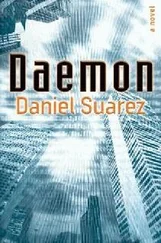Kulkarni put his glasses back on. “My God… it’s a flux.”
Grady nodded. “Exactly. Gravitational fields follow the same shape as electromagnetic fields. Just as the flowing electrons in a plasma jet generate a magnetic field, we’re thinking these quantum fields interact with gravitation somehow.”
“ Antigravity? You can’t be serious.”
“No. Not antigravity. What I think we’ve created is a machine that’s ‘shiny’ to gravity—a gravity mirror . Or perhaps refraction is more accurate. I’m not sure yet.”
Kulkarni pointed. “This is clearly some form of electromagnetism. Water is diamagnetic, and at these high-energy levels you could probably float a brick given just trace amounts of magnetic material. Surely you don’t claim you’re reflecting gravity?”
“Superconductors exclude magnetic fields, Doctor.” Grady pointed. “And you must admit our test results look promising.”
“But…” Kulkarni was speechless for a few moments as he watched the cheap malt liquor bubbling around in midair. “If you could bend gravity… it would mean…” His voice trailed off.
Grady finished for him. “It would provide compelling support for the existence of gravitational waves. Not to mention gravitons. And a few other things besides.”
Kulkarni groped for a chair, but all the nearby ones were in pieces. “My God…”
“It is pretty damn cool.”
Kulkarni started shaking his head again. “No. This must be electromagnetism. Even a nonferrous liquid—”
“You’re quite right to be skeptical. Our lab is open to you.”
“Because what you’re suggesting… well, the Standard Model of physics… this would create an entirely new form of astronomy. It would mean the Nobel Prize. And that’s just for starters.”
Alcot, Grady, and the technicians exchanged looks.
Grady laughed. “I hadn’t thought of that, Bert.”
Alcot raised his eyebrows. “It was the first thing I thought of.”
Marrano held up his hands. “Whoa! Guys. Hang on a second.”
They all turned to Marrano.
“Just an observation: You’re using enough energy to light a hundred thousand homes—to levitate a mouthful of malt liquor six feet off the ground. That’s about as cost-effective as using a Boeing 747 to clean a throw rug.”
Doctor Kulkarni was starting to ponder what he was looking at as he waved Marrano off. “You’re not realizing the potential significance of this discovery, Mr. Marrano.”
“Significance is great, but it’s not gonna make the economics work any better.”
“If what we’re really looking at is antigravity—or a gravity mirror, as you say, Mr. Grady—and we haven’t yet determined that…” Kulkarni started examining the computer screen as he spoke to Marrano. “The potential impact would be enormous, it could reveal… well, the warp and weft in the fabric of the universe. It would help us understand the structure of space-time itself. So far, gravity is the only force that hasn’t conformed to the Standard Physics Model. No, this is potentially the most significant discovery of the century. Of perhaps any century. It could unlock untold scientific advances. Even a grand unified field theory.”
The moneymen exchanged looks.
“Okay, and the commercial potential for that is…?”
It was the scientists’ turn to look at one another.
Grady handed the bottle of malt liquor to Kulkarni—who steadied himself by taking a swig. Meanwhile Grady answered Marrano’s question. “Probably not much initially; as you mentioned, it requires huge amounts of energy to induce these exotic particle states—even for just a tiny area. To commercialize it you’d need nearly unlimited energy—”
Alcot added. “Unlimited cheap energy.”
“Yes, unlimited cheap, portable energy. Assuming that, you could create reflective gravity devices. But as you mentioned, there are more practical ways to make things fly—”
Johnson motioned to the bubbling liquid, still floating in the sphere. “So then you’ve created the world’s most expensive lava lamp. Don’t get me wrong—it’s impressive—but at fifty megawatts…”
Kulkarni stepped between them. “You’re not appreciating how important this could be to science.”
“We brought you here as the voice of reason, Doctor. You’re starting to sound like a nerdy kid at the museum.”
Grady took the bottle back. “Yeah. I was that kid, too.”
Kulkarni regained his serious bearing. Nodding, he turned again to Alcot. “Bert, prove to me this isn’t simply some form of electromagnetism. Does it work in a vacuum, for instance? Can we rule out ionic lift?”
Alcot leaned on a cane. “We’ve produced the same results in a vacuum chamber and with nonmagnetic materials.” He turned to Grady. “Jon, show Sam the field manipulation experiments.”
“Right.” Grady pointed at the floating membrane of malt liquor. “Look at the shape of the field. It’s one reason why I’ve always believed electromagnetism and gravity were linked—albeit in different dimensions.”
Kulkarni was hesitant. “If it looks like an electromagnetic field, and acts like one…”
“It’s not magnetism. Any baryonic matter with mass that you place in that field will experience the gravitational effects. Literally anything.”
“Do you expect me to believe that with just fifty megawatts of power you’re exceeding the gravity well of the entire Earth? Without creating miniature black holes or—”
“No, no. Again, We’re not creating gravity at all. Remember: We’re reflecting gravity. A gravity mirror. And that high-energy mirror can be manipulated to refract gravity in various directions.”
“You mean like photons?”
Grady considered this as he ran fingers through his mangy hair. “Perhaps. I’m not certain yet. But the reason I say it’s like a mirror or a prism is we can only reflect the gravitational field that’s already present. We can’t increase the strength of gravity no matter how much electrical energy we pump into the field. If there’s one Earth gravity present, then that’s the maximum we can reflect. But since gravity is also acceleration, we should also be able to mirror the increased g-forces experienced in acceleration—in effect canceling out higher g-forces. Which could be a very interesting application.”
“Theoretically.”
“Yes. Theoretically. Here…” Grady approached his computer monitor and pointed at a series of sensor readings. “We can diffuse the effect, too. We’re using the gravitational equivalent of Halbach spheres to create the gravitic field, which means we can manipulate the gravity field much the same way you can manipulate an electromagnetic field with a Halbach array. We can modify its shape—exerting either an equal flow in all directions…” He adjusted the knobs.
Suddenly the polar cap of beer poured downward and balled up into a glistening globule at the very center of the imaginary sphere—still hovering in midair but precisely spherical.
Kulkarni muttered to himself. “My God. Zero gravity.”
“Actually an equal flow of microgravity. The gravitational field is focused in toward a central point.”
“An equilibrium then.”
“Right. Or we can focus it in any single direction. Change the direction of descent—essentially change which way is ‘down’—to any vector in space…” He moved a joystick, and the beer suddenly hurtled out of the apparatus and “fell” across Marrano and Johnson, soaking them both.
“Goddamnit, Grady!”
“What the hell are you doing? This is a four-thousand-dollar suit!”
“Sorry, guys.”
Kulkarni was already looking around at all the debris on the floor. The dents and holes in the walls. “I’m beginning to understand why the lab’s a mess.”
Читать дальше












